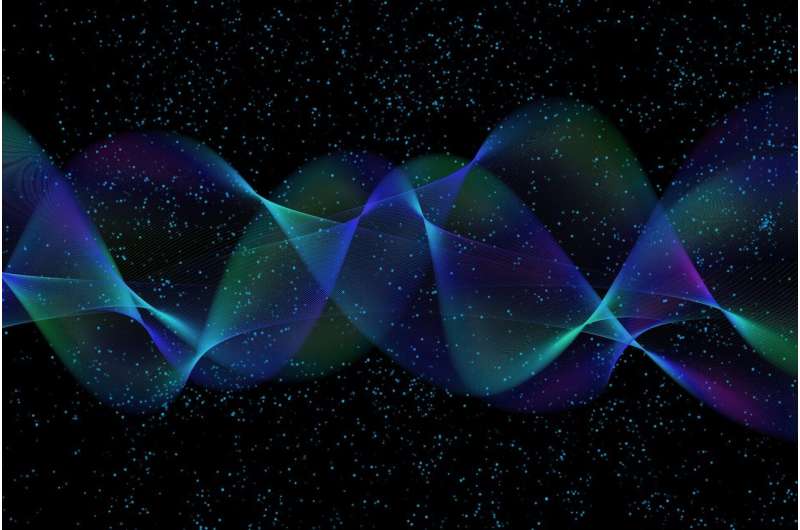This article has been reviewed according to Science X's editorial process and policies. Editors have highlighted the following attributes while ensuring the content's credibility:
fact-checked
peer-reviewed publication
trusted source
proofread
High-precision timing data determine upper limit for photon mass

In a study published in The Astrophysical Journal, Prof. Zhou Xia from the Xinjiang Astronomical Observatory (XAO) of the Chinese Academy of Sciences and collaborators have, for the first time, derived the dispersion relation for photons with nonzero mass propagating in plasma, and established a stringent upper limit for the photon mass at 9.52 × 10-46 kg (5.34 × 10-10 eV c-2) using data collected by ultra-wideband (UWB) receivers from pulsar timing and fast radio bursts (FRBs).
Photons are typically considered massless particles, a hypothesis based on Maxwell's electromagnetic theory and Einstein's special relativity. However, if photons possess nonzero mass, it would have profound implications for existing physical theories.
Researchers in this study provided a novel theoretical framework for understanding the propagation characteristics of massive photons in plasma.
They used high-precision timing data from the Parkes Pulsar Timing Array (PPTA) and dedispersed pulse data from FRBs. Leveraging the wide frequency range covered by UWB receivers, they improved the signal-to-noise ratio and the accuracy of dispersion measurements.
The high time resolution of UWB technology allowed for precise determination of signal arrival times, effectively reducing the dispersion effects caused by the interstellar medium.
This study highlights the critical role of high-precision radio telescopes and advanced equipment in astronomical research.
With the deployment of the Five-hundred-meter Aperture Spherical radio Telescope (FAST) and the upcoming QiTai radio Telescope (QTT), along with the widespread application of UWB receivers, testing photon mass will become more precise and in-depth, which will contribute to a deeper understanding of the nature of photons and help uncover the fundamental laws of the universe.
More information: Yu-Bin Wang et al, Bounding the Photon Mass with Ultrawide Bandwidth Pulsar Timing Data and Dedispersed Pulses of Fast Radio Bursts, The Astrophysical Journal (2024). DOI: 10.3847/1538-4357/ad2f99
Journal information: Astrophysical Journal
Provided by Chinese Academy of Sciences




















